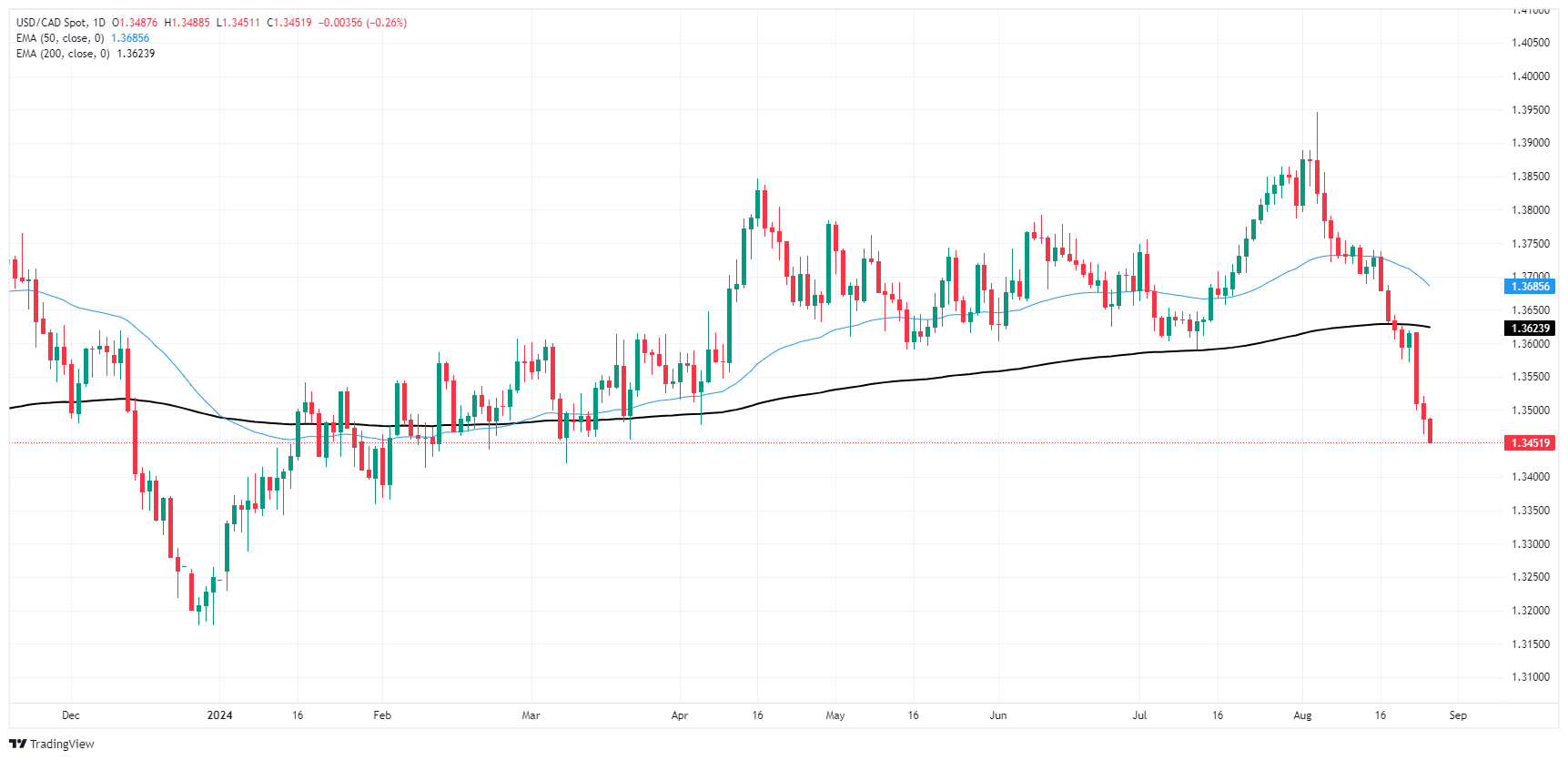Canadian Dollar finds further room against Greenback despite overall soft tone
- The Canadian Dollar eased back on Tuesday, but the US Dollar fell faster.
- Canada remains data-light until Friday’s GDP print.
- Markets are hunkering down until Friday’s US PCE inflation figures.
The Canadian Dollar (CAD) traded with a broadly softer tone on Tuesday, easing back against the majority of its major currency peers, but still found room to move higher against the US Dollar (USD). The Greenback floundered across the board heading into the midweek, dipping into the red and helping to send USD/CAD into a third straight down day.
Canada remains mostly absent from the economic calendar this week until Friday’s Gross Domestic Product (GDP) update for the second quarter. Annualized Q2 GDP is expected to tick down to 1.6% from 1.7%, but markets are likely to be focused entirely on US Personal Consumption Expenditure - Price Index (PCE), which are due to print in the same release window.
Daily digest market movers
- Markets continue to sell the Greenback into the ground as rate cut expectations hold on the high side.
- CAD continues to struggle to find its own momentum and remains at the mercy of broader market flows.
- The Federal Reserve (Fed) pivoting into a dovish stance remains the talk of the town.
- According to the CME’s FedWatch Tool, rate markets are pricing into over 35% odds of a 50 bps rate trim on September 18, with the remainder expecting a quarter-point cut.
- Rate traders expect a total of 100 bps in cuts by the year’s end.
Canadian Dollar price forecast
Despite the Canadian Dollar’s (CAD) unconfident tone on Tuesday, a broadly weakening US Dollar has sent USD/CAD price action into the gutter, extending a decline below 1.3500 and testing six-month lows near 1.3450. The pair has traded into the red for all but four of the last 17 consecutive trading days, tumbling 3.5% peak-to-trough from early August’s peak bids just shy of 1.3950.
A one-sided bearish plunge in USD/CAD chart action has let bids slump directly through the 200-day Exponential Moving Average (EMA) at 1.3628. Sidelined bulls are running out of room to find a foothold before momentum breaks through the low end of early 2024’s congestion zone between 1.3600 and 1.3400.
USD/CAD daily chart
Canadian Dollar FAQs
The key factors driving the Canadian Dollar (CAD) are the level of interest rates set by the Bank of Canada (BoC), the price of Oil, Canada’s largest export, the health of its economy, inflation and the Trade Balance, which is the difference between the value of Canada’s exports versus its imports. Other factors include market sentiment – whether investors are taking on more risky assets (risk-on) or seeking safe-havens (risk-off) – with risk-on being CAD-positive. As its largest trading partner, the health of the US economy is also a key factor influencing the Canadian Dollar.
The Bank of Canada (BoC) has a significant influence on the Canadian Dollar by setting the level of interest rates that banks can lend to one another. This influences the level of interest rates for everyone. The main goal of the BoC is to maintain inflation at 1-3% by adjusting interest rates up or down. Relatively higher interest rates tend to be positive for the CAD. The Bank of Canada can also use quantitative easing and tightening to influence credit conditions, with the former CAD-negative and the latter CAD-positive.
The price of Oil is a key factor impacting the value of the Canadian Dollar. Petroleum is Canada’s biggest export, so Oil price tends to have an immediate impact on the CAD value. Generally, if Oil price rises CAD also goes up, as aggregate demand for the currency increases. The opposite is the case if the price of Oil falls. Higher Oil prices also tend to result in a greater likelihood of a positive Trade Balance, which is also supportive of the CAD.
While inflation had always traditionally been thought of as a negative factor for a currency since it lowers the value of money, the opposite has actually been the case in modern times with the relaxation of cross-border capital controls. Higher inflation tends to lead central banks to put up interest rates which attracts more capital inflows from global investors seeking a lucrative place to keep their money. This increases demand for the local currency, which in Canada’s case is the Canadian Dollar.
Macroeconomic data releases gauge the health of the economy and can have an impact on the Canadian Dollar. Indicators such as GDP, Manufacturing and Services PMIs, employment, and consumer sentiment surveys can all influence the direction of the CAD. A strong economy is good for the Canadian Dollar. Not only does it attract more foreign investment but it may encourage the Bank of Canada to put up interest rates, leading to a stronger currency. If economic data is weak, however, the CAD is likely to fall.
